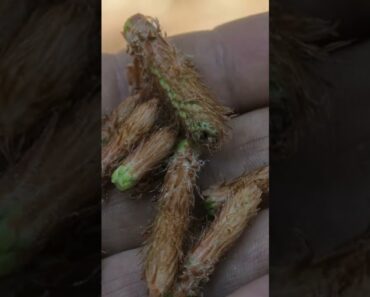There are always TEOTWAWKI survival scenarios that capture the survival community’s imagination. For a number of years that’s been an EMP, although back around 2014 the possibility of an Ebola pandemic rose to the forefront. The epidemic in Northwest Africa had a lot of people concerned, especially since it was the largest outbreak of Ebola on record. But back 30 or 40 years ago, before we were aware of EMP, the big one that everyone was concerned about was an asteroid hitting the Earth.
Part of this renewed interest can be laid at the doorstep of NASA, our government’s space agency, which has upped their asteroid detection game in recent years. Just recently, NASA upgraded their asteroid tracking capability, giving them “full sky” tracking capability. This is now done by radar, rather than through the use of telescopes, a much more accurate means of determining an asteroid’s course track. A single hour’s worth of radar data provides sufficient data to accurately project the asteroid’s path for years to come.
I suppose that the idea of a rogue asteroid destroying the Earth does have some historic president, considering that scientists believe that the extinction of the dinosaurs was caused by an asteroid impacting with the Earth. This impact is believed to have caused an ice age, with the colder climate killing off the giant reptiles.
This may not make much sense, unless you understand what would happen if such an asteroid or comet hit the Earth. These asteroids, which are made up of a mixture of clay, rock, minerals and sometimes even ice, travel at an average speed of about 25 kilometers per second. Those that get captured by the Earth’s gravity accelerate as they come down, reaching about 30 kilometers per second. To put that into perspective, that works out to 98,425 feet per second. Rifle bullets, which vary in velocity, travel at an average of 3,900 feet per second, 1/25 of that speed.
With that high a velocity, any asteroid hitting the surface of the Earth would have an incredible amount of kinetic energy; enough so that the apparent explosion from the asteroid’s impact could be greater than that generated by a nuclear bomb. The material of the asteroid, as well as the rocks and dirt at the impact point would be pulverized, creating a huge blast wave, traveling out from the epicenter. Then, just like happens with an atomic explosion, that blast wave would collapse back on itself, creating a mushroom cloud.
The characteristic mushroom cloud from an atomic explosion is filled with dust and debris, kicked up by the explosion, just as it would be in the case of a large asteroid impact. This is carried up into the upper atmosphere and eventually comes back down as fallout. There would be fallout too, in this case, but it would not be radioactive.
We have a very good idea of what that dust in the upper atmosphere does, because of what’s known as the Year Without a Summer, which happened in 1816. Mount Tambora, a volcano in what was then known as the Dutch East Indies erupted, spewing tons of ash into the upper atmosphere. During the three years that it took for that ash to fall back to earth, the amount of sunlight reaching the surface was diminished by 0.4 – 0.7°C. While that didn’t have much of an impact, the loss of sunlight reduced harvests considerably in 1816, causing widespread famine.
While there is no historic record of the Chicxulub Impactor, as the asteroid that ended the reign of the dinosaurs is known, the dust and debris kicked up into the upper atmosphere by its impact probably had a similar effect, although to a much greater degree. This asteroid, which was 3.1 miles in diameter, hit off the coast of the Yucatan Peninsula, near the city of Mérida, Mexico, leaving a crater that is 110 miles (180 km) in diameter and over 12 miles (20 km) in depth. Scientists have estimated that the kinetic impact equaled an explosion equivalent to 100,000 gigatons of TNT. By comparison, the Tzar Bomb, the largest nuclear bomb ever built, was only the equivalent of 50 million tons of TNT, one-two-thousandth of the explosive force.
The asteroid that made this crater is estimated to have been 10 kilometers, or six miles, in diameter. Not only did it throw up massive amounts of pulverized dust into the upper atmosphere, but more recent research indicates that it also caused the biggest earthquakes the Earth has ever known, releasing some 50,000 times more energy than the magnitude 9.1 earthquake that hit Sumtra in 2004. That was the third largest earthquake in recorded history.
By comparison, the asteroids that NASA tracks as “Near Earth Objects” (NEOs) are much smaller, with sizes ranging from 4 meters up to 320 meters in 2022. Pretty much all of those are large enough that they would survive passing through our atmosphere and hit the Earth, if they were on a collision course. But NASA classifies any asteroid or comet that passes within 1.3 au of the Earth. An AU or astronomical unit, is the distance from the Earth to the Sun. That’s 150 million kilometers or 93 million miles. Not quite close enough to do much damage.
Some 17,000 meteorites hit the Earth each year; but most are not much more than dust by the time they make landfall, having burnt up as they passed through our atmosphere. Few are large enough to cause any damage at all by the time they reach the surface and there is only one recorded case of one actually hitting a person, Ann Hodges, in 1954. In addition to being slowed by passing through the atmosphere, the Hodes meteorite was slowed by passing through the roof of her home, a radio and hitting the blanket she was under. It still left a grapefruit-sized bruise.
Few meteorites large enough to be noticed, let alone cause damage hit the Earth. In 1908, an asteroid or comet came into contact with the Earth’s atmosphere and exploded over Russia. The resulting explosion was equivalent to 12 megatons of TNT, flatting an estimated 80 million trees over an area of 2,150 square kilometers (830 square miles).
The Chelyabinsk meteor, which measured roughly the size of a six-story office building, came down over Chelyabinsk, Russia in 2013 and was caught on film. It was undetected ahead of time, because it came from the direction of the sun, making it difficult to stop by astronomical observation. Most of the meteorite was lost in an air burst, which had the explosive power of 400 to 500 kilotons of TNT. That was enough to cause damage to 7,200 buildings and was recorded as far away as Antarctica.
Yet these events are extremely rare. While it is always possible that another meteorite, large enough to cause considerable damage, could hit the Earth in our lifetime, these events have historically happened only every few hundred years. A meteorite large enough to destroy life on Earth would have to be 60 miles wide (96 kilometers), roughly twenty times the size of the Chicxulub Impactor that wiped out the dinosaurs.
There is obviously little that you or I can do to protect ourselves from such an event. Considering the explosive power of these impacts, it would be physically impossible to fortify a home to withstand them or build a bunker that would allow us to survive at ground zero. Such a bunker would have to be buried 12 miles underground, far deeper than the deepest hole that mankind has ever drilled.
There is some good news though; NASA is hard at work, turning science-fiction into reality. In September of 2022, NASA crashed a spacecraft into an asteroid, in an attempt to alter its course. The small asteroid chosen was Dimorphos, an asteroid 525 feet in diameter (160 meters) and one of a pair of asteroids some 6.8 million miles away. The spacecraft impacted this asteroid at 3.8 miles per second, giving it only 0.5% of the asteroid’s momentum. Even so, it managed to altar the asteroid’s orbit around its twin by 23 minutes. Considering that they had pre-determined that anything more than 73 seconds would be a success; this test can be considered an outstanding success.
Considering the small mass and velocity of the spacecraft, it appears that the material ejected from the asteroid by the kinetic explosion works out to somewhere between 10 and 100 times the mass of the spacecraft itself. Such a huge increase in performance was obviously due to the mass and velocity of the asteroid itself.
While this does not mean that NASA has a weapon ready to protect the Earth from a destructive asteroid aimed right at us; but it is a major step in the right direction. This was nothing more than a proof of concept. Now the concept needs to be developed and turned into a real weapon.
One of the biggest challenges facing NASA is one of aiming the spacecraft; something that they fortunately have lots of experience with. Dimorphos was hit at a point in its orbit when it was coming right at the course track of the spacecraft. That simulates the course track to be expected from an asteroid heading towards the Earth. There would still be some cross-ranging to be concerned about, as both the orbital path of the Earth and the orbital path of the asteroid could have to be taken into consideration. But again, that’s something that NASA has been doing for years. At the time of impact, there would be no cross-ranging, as the point of impact would be somewhere between the original detection point and the Earth, with the asteroid heading towards where the Earth would end up being when it arrived.
Yes, the math is enough to give a world-class headache to you and me. I guess that just proves we’re not rocket scientists. On the other hand, the people working on this program are actual rocket scientists, who I am sure are much better at the math, than I am.




























